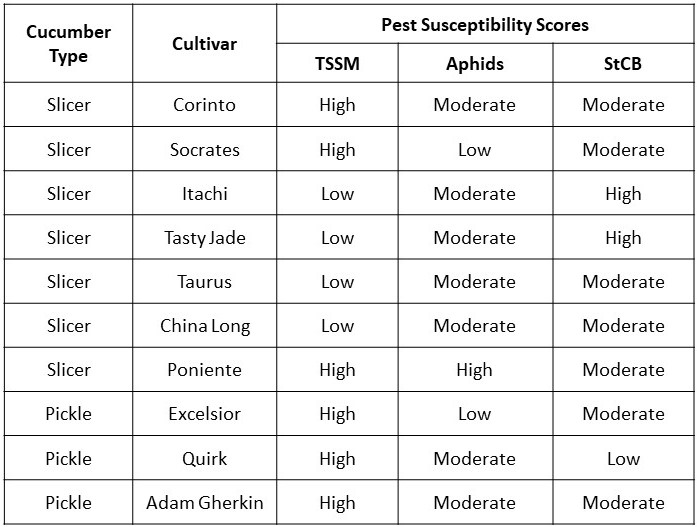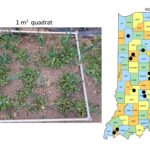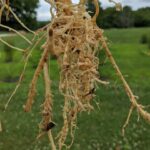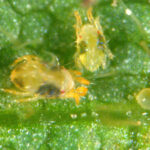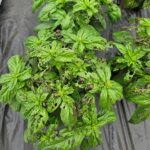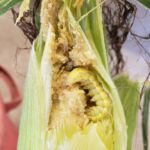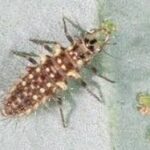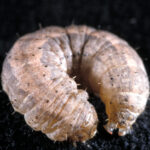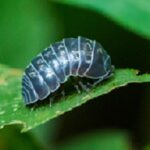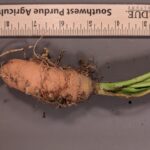Over the past two years, we’ve been testing various cucumber cultivars to see which ones are most vulnerable to pests in high tunnel systems. We split the cucumbers into two groups based on fruit characteristics for a fair comparison. The first group consists of pickle-type cucumbers, known for being small, blocky, and having thin skin.[Read More…]
Pests and Pest Management - General
References, associations, organizations, periodicals, pesticides, pesticide safety, pest laws and regulations
Background High tunnels provide a hospitable environment for crops and insect pests, but little is known about the weed community present within them. From 1 December 2022 to 17 March 2023, we visited 14 farms monthly across Indiana and used a quadrat-style approach to measure weed pressure (0% to 100% weed coverage per quadrat) and[Read More…]
Root-knot nematodes cause severe damage in vegetable production. Its infection results in root swellings called galls that interrupt plant water and nutrient uptake (Figure 1). Aboveground, plants show symptoms that include stunted growth, wilting, and leaf yellowing. In addition to root-knot nematodes, several other plant parasitic nematodes can cause damage to vegetable roots. Damage to[Read More…]
This season started out dry and hot. These are the ideal conditions for pests that we often associate with controlled environments: aphids and mites. There are a number of factors that contribute to their success in these conditions, including lack of rain which physically removes the insect from the plant and drought-stressed plants, which are[Read More…]
Last week I encountered my first adult Japanese Beetle of the 2023 season. It was at my home, and I was keeping my fingers crossed that it was just an unlucky stray individual, but hoping I had more time before their devastation would arrive. Well, I was wrong. Over the weekend, I found a few[Read More…]
Join eOrganic for 4 webinars on the findings of the biocontrol project in April and May 2023! Register at the links below for the May 18 and May 24 webinars! Recordings will be posted here and on the eOrganic YouTube channel! eOrganic Webinars Date Webinar Presenters April 26, 2023 Marketing Value-added Grains for Local and[Read More…]
Each year we get several reports of seedlings being cut at or near the base of the plant/soil surface. The critter who gets the blame most often is cutworms. And that makes sense because the damage is in the name. However, with closer inspection, it seems that the blame can often be misplaced. There are[Read More…]
Background Pillbugs, roly-polys, and potato bugs are the dominant common names for the isopod genus Armadillidium spp. As the scientific name suggests, these little critters resemble mini armadillos but are, in fact, crustaceans that live on land (Figure 1). Therefore, they are more closely related to lobsters, crabs, and shrimp than insects. Pillbugs are important[Read More…]
We announced in a previous newsletter article that we are doing a survey to understand the extent of root-knot nematode (RKN) damage on vegetable crops in Indiana. Among the 18 soil samples from high tunnels of 14 farms, RKNs (juvenile or adult) were found in 13 samples at 9 farms. Only 3 farmers knew RKN[Read More…]
